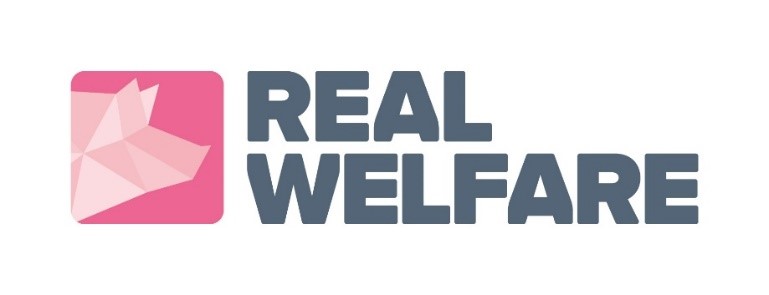Real Welfare
In 2023, the pork sector council acted on clear messages from levy payers to amplify our work on marketing, exports and reputation (including educating younger consumers). As a result, we no longer fund or operate the Pig Health Scheme and Real Welfare programmes.
Work to improve animal health and welfare is important, not only for animals but for the profitability of the industry and to assure consumers of high welfare standards.
While much was retained following the review in 2023, the sector council directed AHDB to discontinue funding the Pig Health Scheme and Real Welfare programmes.
As a result, Red Tractor suspended standard AH.11, which requires Real Welfare assessments to be carried out on all units rearing pigs greater than 50 kg, from 1 April 2023.
Assessors have been instructed not to raise non-conformances against this standard and vets are no longer obliged to carry out Real Welfare assessments or report this data.
Historical data will be stored securely by AHDB, however, for data security reasons, we were required to close access to the Real Welfare database and producer reports.
If you have any questions or concerns, email: real.welfare@ahdb.org.uk
Log in or create a Pig Hub account
Read the Pork sector plan 2022–2027
What was Real Welfare?
Real Welfare involved on-farm assessment of pig welfare using a set of five objective and repeatable measures.
These measures are known as ‘welfare outcomes’, which are animal-based, meaning that they are obtained from the animals themselves, rather than from their environment.
Real Welfare was developed in response to the pig industry’s need for strong, science-based evidence to demonstrate its husbandry standards to retailers, animal welfare lobby groups, policymakers and consumers.
Following extensive work by researchers at the University of Bristol, University of Newcastle and the RSPCA, the Real Welfare scheme was launched as a requirement of Red Tractor Farm Assurance on 1 April 2013, and QMS Pigs Farm Assurance since August 2016.

How were welfare outcome assessments used?
Welfare outcome assessments were used to:
- Assess the level of welfare achieved for an individual animal, a pen of animals, a farm building or a farm/unit
- Identify and monitor welfare problems and solutions on a farm
- Strengthen farm management through assessment, feedback from vets and benchmarking
- Provide more reliable and direct assurance of animal welfare, including to retailers and consumers
What were the welfare outcome measures?
Sample pens of finisher pigs (greater than 50 kg) were routinely assessed for the following:
- Pigs that would benefit from removal to hospital pen (hospital pigs)
- Lame pigs
- Pigs with tail damage
- Pigs with body marks
- Environmental enrichment provision and use (n.b. this measure is optional)
Real Welfare was also used to collect information on other variables, such as feeding practices, pen variables and whether tails are docked or undocked.
Real Welfare for Red Tractor – Measures for on-farm assessment
Who carried out the assessments?
Real Welfare assessments were carried out by vets who were members of the Pig Veterinary Society.
These vets undertook regular online and practical training. The assessments were usually carried out as part of the quarterly veterinary visits and were paid for by the producer.
Since the vet knew the unit, they could immediately give advice, where and when needed. Any agreed course of action was recorded in the farm’s veterinary health plan and became auditable by the Red Tractor auditors.
How many pigs were assessed?
Real Welfare assessments took place 2–4 times a year, depending on how the farm operated.
A sample of pigs from a range of pens was assessed during each visit. The total number assessed per year depended on how many finisher places a farm had.
The vet carrying out the assessment was trained in how to calculate the appropriate sampling numbers.
Some measures required a scan assessment of all pigs in a sample pen, while other measures were recorded from only a sample of individual pigs.
How was the data used?
Real Welfare outcomes were reported back to the producers as a rolling total, combining all assessments from the previous 365 days.
This meant Real Welfare reports on the general welfare status and management of finisher pigs on farm, and any variation between batches (through disease or extreme weather, for instance) was evened out.
Such fluctuations were inevitable and did not necessarily reflect the normal situation on that farm.
Assessment outcomes were discussed between the vet and farmer, so opportunities for improvement could be identified and acted upon, if needed.
Real Welfare also allowed farmers to benchmark their welfare outcomes against other farms, as well as against their peers.
Red Tractor, QMS and AHDB did not have access to individual farm data. We managed the anonymised data set amalgamated across all units, which enabled us to monitor welfare outcomes across the whole industry.
Real Welfare reports
The Real Welfare database was unique and the biggest of its kind anywhere in the world.
The data from the first years of the Real Welfare scheme have been analysed by statisticians and the results have now been published in a number of reports summarising the findings and scientific papers, which give a more in-depth investigation and background of the Real Welfare data.
Real Welfare baseline report 2013–2016

